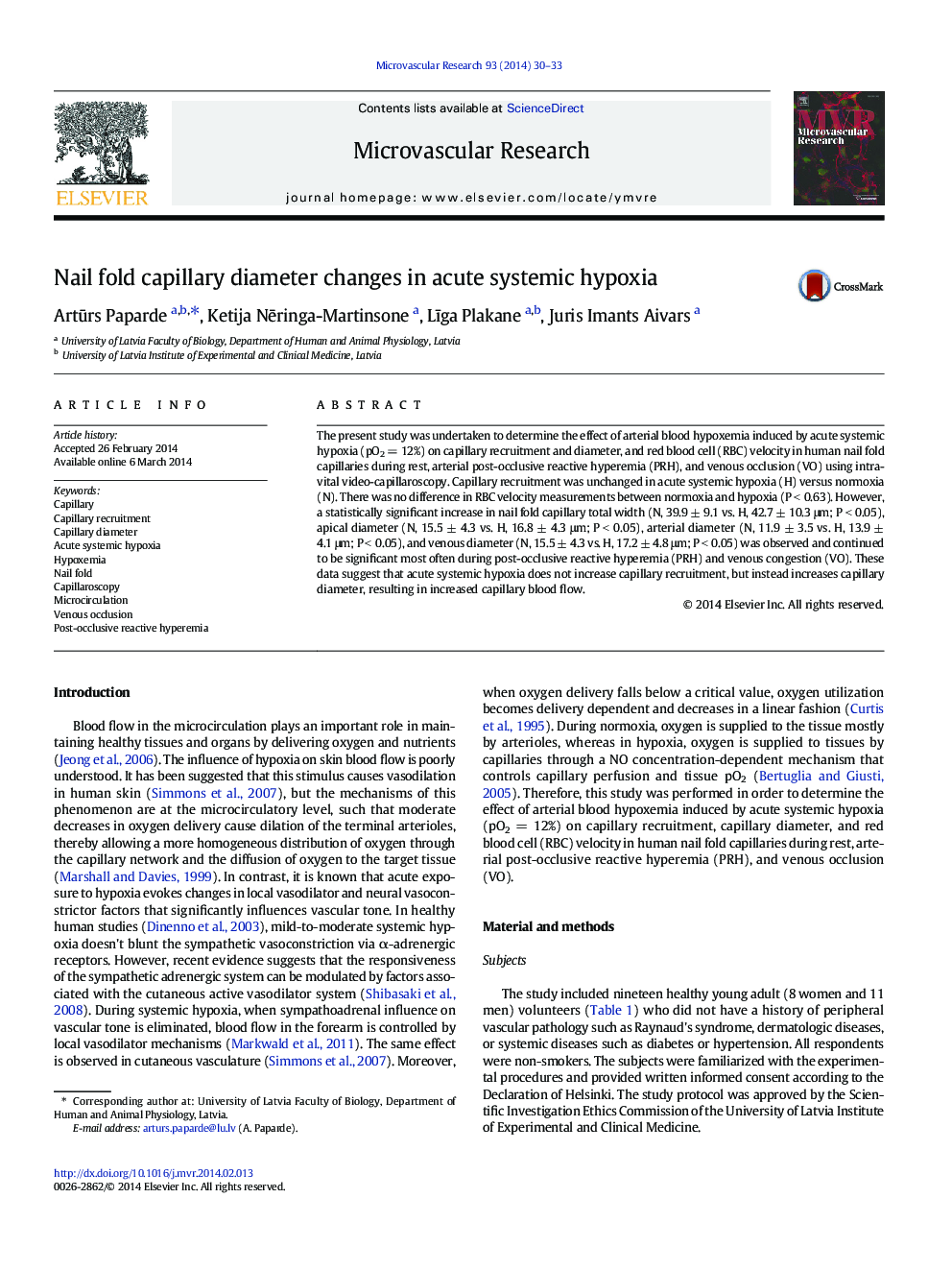| Article ID | Journal | Published Year | Pages | File Type |
|---|---|---|---|---|
| 1994792 | Microvascular Research | 2014 | 4 Pages |
•Acute hypoxia in nail fold of middle finger does not change capillary recruitment.•Red blood cell velocity does not increase in acute systemic hypoxia.•Statistically significant increases are noted in nail fold capillary loops.•Acute hypoxia increases capillary diameters, but not capillary recruitment.
The present study was undertaken to determine the effect of arterial blood hypoxemia induced by acute systemic hypoxia (pO2 = 12%) on capillary recruitment and diameter, and red blood cell (RBC) velocity in human nail fold capillaries during rest, arterial post-occlusive reactive hyperemia (PRH), and venous occlusion (VO) using intravital video-capillaroscopy. Capillary recruitment was unchanged in acute systemic hypoxia (H) versus normoxia (N). There was no difference in RBC velocity measurements between normoxia and hypoxia (P < 0.63). However, a statistically significant increase in nail fold capillary total width (N, 39.9 ± 9.1 vs. H, 42.7 ± 10.3 μm; P < 0.05), apical diameter (N, 15.5 ± 4.3 vs. H, 16.8 ± 4.3 μm; P < 0.05), arterial diameter (N, 11.9 ± 3.5 vs. H, 13.9 ± 4.1 μm; P < 0.05), and venous diameter (N, 15.5 ± 4.3 vs. H, 17.2 ± 4.8 μm; P < 0.05) was observed and continued to be significant most often during post-occlusive reactive hyperemia (PRH) and venous congestion (VO). These data suggest that acute systemic hypoxia does not increase capillary recruitment, but instead increases capillary diameter, resulting in increased capillary blood flow.
